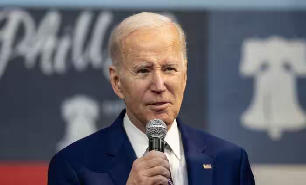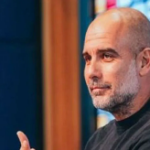Despite failing to deliver his promise for broad student loan forgiveness, President Joe Biden has now overseen the cancellation of student loans for more than 5 million Americans — more than any other president in US history. In a last-minute action on Monday, the Education Department cancelled loans for 150,000 borrowers through programmes that existed before Biden took office. His administration expanded those programmes and used them to their fullest extent, pressing on with cancellation even after the Supreme Court rejected Biden’s plan for a new forgiveness policy.
“My Administration has taken historic action to reduce the burden of student debt, hold bad actors accountable, and fight on behalf of students across the country,” Biden said in a written statement. In total, the administration says it has waived USD 183.6 billion in student loans. The wave of cancellation could dry up when President-elect Donald Trump takes office. Trump hasn’t detailed his student loan policies but previously called cancellation “vile” and illegal.
A smaller share of the relief came through a programme for borrowers with disabilities and through Public Service Loan Forgiveness, which was created in 2007 and offers to erase all remaining debt for borrowers in a government or nonprofit job who make 10 years of monthly payments. Most of Monday’s borrower defence cancellations were for students who attended several defunct colleges owned by Center for Excellence in Higher Education, including CollegeAmerica, Stevens-Henager College, and Independence University. They are based on past findings that the schools lied to prospective students about their employment prospects and the terms of private loans.
Before Biden took office, those programmes were criticised by advocates who said complex rules made it difficult for borrowers to get relief. The Biden administration loosened some of the rules using its regulatory power, a maneuver that expanded eligibility without going through Congress. As an example, just 7,000 borrowers had gotten their loans cancelled through Public Service Loan Forgiveness before the Biden administration took office. Widespread confusion about eligibility, along with errors by loan servicers, resulted in a 99 per cent rejection rate for applicants.
Huge numbers of borrowers made years of payments only to find out they were in an ineligible repayment plan. Some were improperly put into forbearance — a pause on payments — by their loan servicers. Those periods didn’t end up counting toward the 10 years of payments needed for cancellation. The Biden administration temporarily relaxed the eligibility rules during the pandemic and then made it more permanent in 2023. As a result, more than 1 million public servants have now had their balances zeroed out through the programme.
All those rule changes were meant to be a companion to Biden’s marquee policy for student debt, which proposed up to USD 20,000 in relief for more than 40 million Americans. But after the Supreme Court blocked the move, the Biden administration shifted its focus to maximizing relief through existing mechanisms.
Republicans have called for a different approach Announcements of new cancellation became routine, even as conservatives in Congress accused Biden of overstepping his power. Republican states fought off Biden’s later attempts at mass forgiveness, but the smaller batches of relief continued without any major legal challenge.
As Republicans take hold of both chambers of Congress and the White House, Biden’s changes could be targeted for a rollback. But it’s unclear how far the next administration will go to tighten the cancellation spigot. Trump proposed eliminating PSLF during his first term in office, but Congress rejected the idea. Project 2025, a blueprint created by the Heritage Foundation for a second Trump term, proposes ending PSLF, and narrowing borrower defence and making repayment plans less generous than existing ones.



